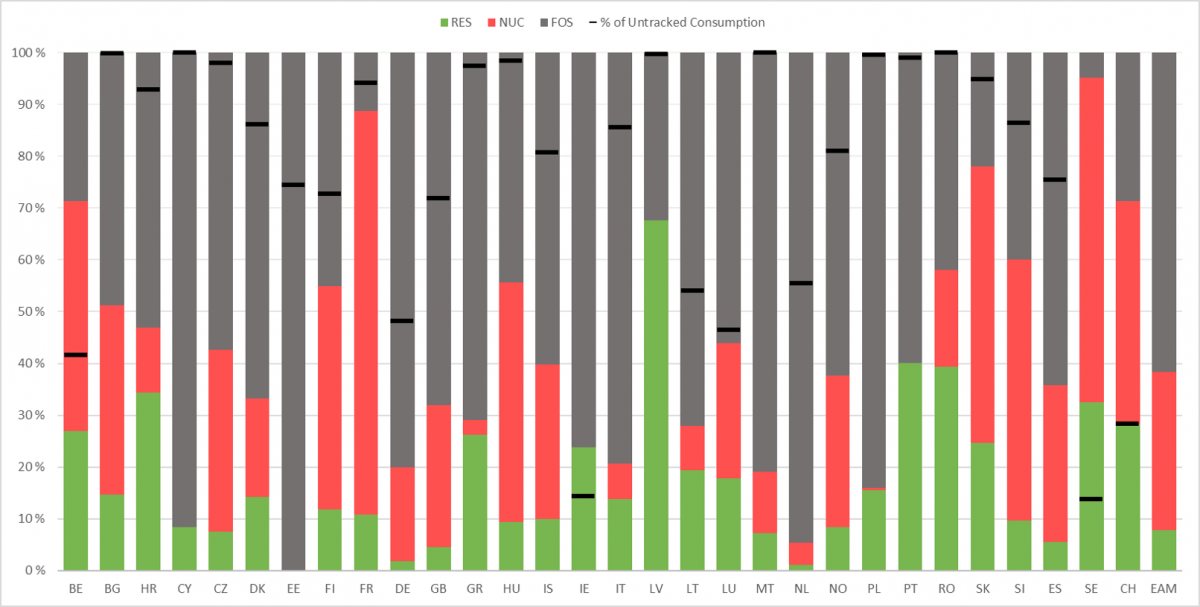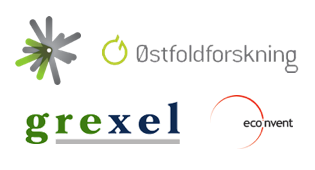2017
The AIB is proud to publish the Residual Mixes and European Attribute Mix of 2017. Similar to last year the calculation was carried out by Grexel Systems Ltd. on its behalf, assisted by Ostfoldforskning and Ecoinvent.
A residual mix is needed for reliable disclosure of electricity consumption where Guarantees of Origin (or in some cases other legally accepted tracking instruments) are not used. Due to the international nature of both the power market and the Guarantee of Origin (GO) market, centrally calculated residual mixes and the European Attribute Mix is needed. Energy authorities use the results of the calculation either directly or to calculate the residual mix for their respective country using national rules.
Key findings of the 2017 calculation are:
- The volume of explicitly tracked consumption grew from 919 to 962 TWh meaning more certification of consumed electricity, using e.g. GOs
- The share of untracked consumption continued to shrink being 71% in 2017. Austria has implemented “full disclosure” meaning that all consumption is certified with GO. The next lowest shares of untracked consumption were in Sweden (13,8%) and Switzerland (28,3%). The low share of untracked consumption indicates the willingness of the power consumers to favour green over generic power products.
- In average, the residual mixes of 2017 have 17,3% (16,9) renewable, 23,8% (23,2) nuclear and 58,9% (59,9) fossil (2016 figures in brackets).
- Volume of total deficit in national residual mixes before balancing via EAM grew from 252 to 277 TWh indicating stronger polarization between importing and exporting countries and hence greater need for centrally coordinated residual mix calculation

The complete results of the calculation can be found below.
The presence and use of a reliably calculated Residual Mix makes the entire disclosure system trustworthy, by determining and correctly disclosing to consumers who are purchasing a non-specific type of electricity. The concept of Residual Mix is also recognized by the “Clean Energy for All Europeans” Package currently being debated by the EU Commission, Parliament and Council.
To avoid so-called “expanding” of energy origin in all cases where GOs are exported, a coordinated European Attribute Mix needs to be calculated and applied. This is why AIB’s coordination of the EAM calculation complements the HUB service of the AIB extremely well: it informs countries of the origin of the energy they receive in return, when GOs are exported via the AIB HUB. This is a prerequisite for a complete and reliable electricity disclosure scheme, and closes the loop for the HUB service.
At the same time, it is important to remember that Residual Mixes can be seen as an intermediary step towards a full disclosure system where all electricity disclosure is done through GOs. This is supported by AIB’s reflection paper. Indeed, if all electricity was explicitly tracked through GOs (as it is done in Austria), no residual mix would be needed – which would improve the reliability, accuracy, efficiency and credibility of the disclosure system.

